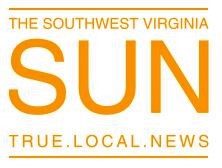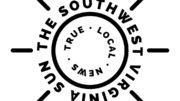The news at Friday’s press conference wasn’t exactly unexpected, but it was toned down from the speculation that surrounded it.
Gov. Ralph Northam during a rare Friday press conference on the coronavirus, set a deadline for Virginia school divisions to offer in-person classes. Stopping short of calling it a mandate, the governor said the March 15 date is guidance from his office, an expectation that he believes superintendents, school boards and teachers will happily meet.
Legislators, Northam said, are making getting students back into school buildings a top priority.
Eleven months ago, Virginia shuttered all schools in the state at the dawn of the pandemic. Since then, some in other portions of Virginia haven’t opened. Others, like Grayson, have been back in session nearly full time since August. Last month, the governor’s office encouraged schools to return to in-person instruction particularly for the students who most need it. Now, with data showing that schools aren’t a rapid spread threat, Northam said it’s “time to find a path to in-person learning.”
By March 15, he said he expects all systems to have the option available for in-person instruction. He said the nearly yearlong closure of schools has taken a toll on children. Doctors have reported, the governor said, increases in mental health, behavioral and substance abuse issues while school are reporting decreases in performance grades.
The governor said optional year round school, summer schools or longer days will help students to catch up and be ready for grade-level work next fall. He said it is critical to prevent greater learning loss than has already happened, explaining that day cares, certain school district, private schools and others have shown it’s possible to safely conduct in-person instruction. Northam said the Centers for Disease Control and Prevention have also said it’s possible to do this safely.
Earlier in the day, Northam had met with school superintendents from around the state give, he said, marching orders to get back to in-person learning by the middle of next month.
Asked about the costs associated with expanding the school year, Northam said districts have received CARES Act funding that could be used and there is revenue available from the state that could help. In addition to extra bus runs, contracts would have to be extended for teachers to teach past June. Northam said that teachers would get the choice whether to work in the summer but said he believed most realize students have suffered and expects a lot would be in the classrooms to help kids catch up.
State Superintendent of Public Instruction Dr. James Lane said teachers would be compensated for anything outside of their contract terms, but reiterated that a significant amount of money came to the schools through the federal CARES Act. Lane said that it the catch-up period would look different depending on the school, saying that some have been open and others haven’t so their needs will differ. Like a lot of what has transpired over the past several months, the decision will ultimately rest with local school districts, Lane said.
Lane said that a work group has been formed to work on remediation and recovery. It is putting together guidance on how to handle learning loss, flexible calendars and how to think about next year.
Though the schools issue had been tipped off by media outlets and took up a lot of the questions, the governor did report more widely on the COVID-19 pandemic in Virginia.
January, he said, was a tough month with a record number of death, hospitalizations and counts. The numbers, though, are trending down now. Hospitalizations, cases and percent positivity are all going in the right direction, according to Northam. Meanwhile, he said, vaccination numbers are going in the right direction.
After abysmal vaccination numbers ranked Virginia in the lowest part of the country for effectively giving out doses, the state made some changes, adjusted inventory and helped local health departments better prioritize and the data are better. Virginia, Northam said, has gotten 86% of its first shots delivered putting in 12 in the nation. The state is nine in the county among percent of population vaccinated.
A bright spot on the vaccinations is in Southwest Virginia, which as a whole has higher vaccination rates than elsewhere in the state. The governor admitted, though, that there is still a ways to go.
“Everyone is feeling impatient,” he said, as demand outstrips supply nationwide.
The supply lines are opening, Northam said, with new doses coming in and new vaccines in the pipeline. CVS will also start rolling out shots to the general public, starting with 36 locations in the state – the closest in Washington and Pulaski counties.
There is some argument on what the CVS procedure will be. Dr. T.K. Avula, who was tapped last month to head up the state’s vaccination efforts, said the pharmacy has indicated that it may offer shots on a first-come, first-served basis but the state is hoping the ensure that isn’t the case. He said they are communicating daily with CVS to try to get the company to integrate into the state’s strategy where thousands are already pre-registered through local health departments.
The governor also provided an update on unemployment benefits that had been expanded, saying that some in the state are struggling and still have received their extended benefits. He said the Virginia Employment Commission has served more people in the past 10 months than it did in the previous 10 years.
Though there is good news regarding the virus, the governor said it’s not the time to let your guard down, particularly since the state has identified variants in the population. Four cases of the so-call UK variant –B.1.1.7 – have showed up in the northern portions of Virginia. Northam said recently that a private lab identified the first case of a South African variant – B.1.351 – that is thought to be both more viral and less impacted by the vaccine.
The governor explained that viruses mutate but to do so they need a host. The fewer hosts, he said, the less it can replicate and change, urging everyone to get vaccinated when they can, wear masks, social distance and wash their hands regularly and vigorously.
The CDC reports that B.1.1.7 has presented in 611 cases nationwide. The Virginia case appears to be the third of the B.1.351 variant in the country with the other two being discovered in Maryland and South Carolina.






